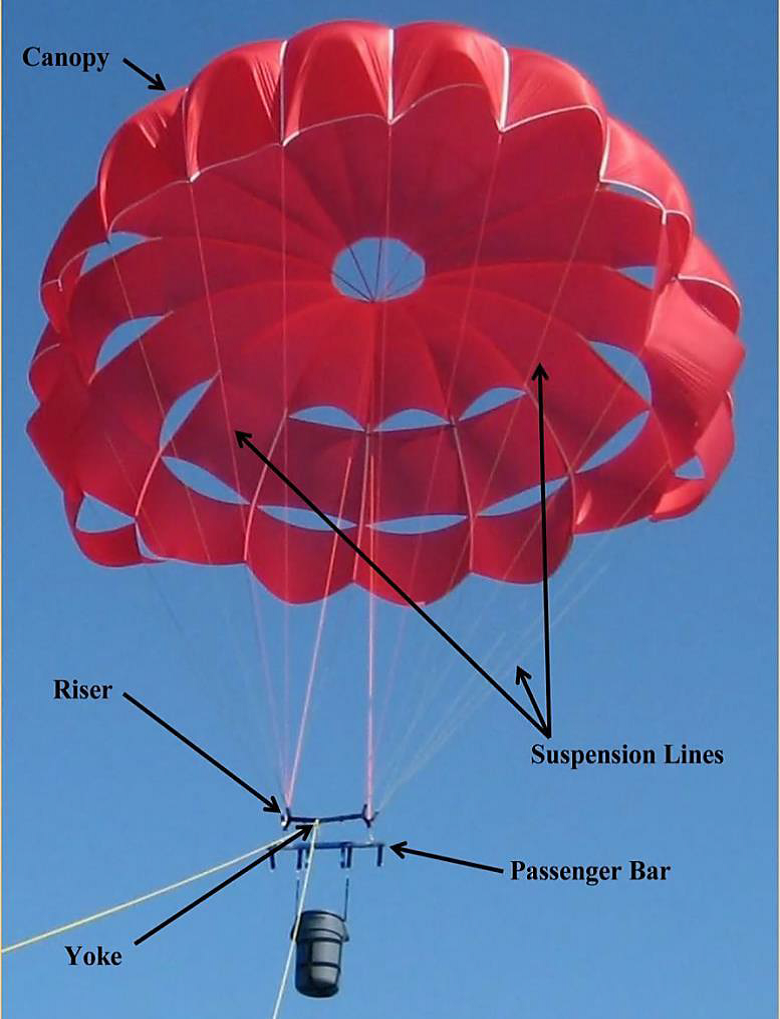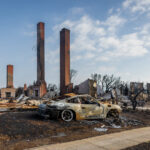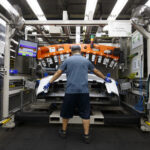A new report released by the National Transportation Safety Board (NTSB) on parasailing safety found that most of the parasailing accidents it investigated were the result of a combination of factors, including an operator’s failure to monitor developing weather condition, poorly maintained flight gear, lack of knowledge of towline and knot strength variability and overloaded equipment.
The 43 page report, created in response to a recent spate of parasailing accidents, noted that each year, three to five million people participate in the recreational activity. Despite its apparent popularity and accidents that usually result in either serious injury or death, there are no current federal regulations or guidelines for the inspection of parasailing equipment.
As a result of its findings, the NTSB made a number of recommendations to the Coast Guard, Federal Aviation Administration and State Boating Law Administrators.
As of last year, there were 325 parasailing businesses in the U.S. and its territories with a third of them located in Florida, according to Coast Guard statistics.

Parasailors are typically strapped to a body harness which is attached to a parasail and a tow boat is used to lift them off of land and over water.
According to the report, parasailors have no control over steering, deflating the parasail or of their direction or lift. As such, passengers are dependent on the tow boat crew despite there being no communication devices used.
Causes of Parasailing Accidents
The NTSB began monitoring parasailing accidents in 2009. In all of the cases examined since that time, all but one involved failure of the parasailing equipment.
The transportation agency’s investigation into the equipment of more recent accidents suggests issues with towlines. Even when new tow lines were used, if a bowline knot was used there was a significant strength reduction that worsened with exposure to weather conditions and use. According to the report and testing completed, “investigators concluded that because of cyclic loading, exposure to environmental elements, the presence of knots, overloading, or a combination of these factors, towlines have repeatedly failed at levels significantly below their rated strength.”
Mark McCulloh, founder of the Parasail Safety Council said that focusing on just the towlines may be irrelevant.
“The towline’s like a fuse. Think of a fuse in a circuit breaker,” he said. “If they made the towline so strong that it didn’t break, then other things could break. The canopy could oscillate and slam somebody into the water. Because parasails, if you tie it up and you get so much wind that there’s no give way point, the parasail could oscillate out of control, and that would be a tragic accident.”
The report concluded that most of the parasailing accidents investigated by the NTSB were the result of a combination of factors mainly the result of an operator’s failure to monitor developing weather condition, poorly maintained flight gear, lack of knowledge of towline and knot strength variability, and overloaded equipment. As a result of its findings, the NTSB suggested the Coast Guard implement a specialized license endorsement that would be required prior to conducting parasailing operations.
With respect to the FAA, the NTSB recommended that the agency work together with the Coast Guard to resolve conflicts that currently exist over the right of way of parasailing vessels, allowing them to have the right of way because of their restricted ability to maneuver.
At the state level, the transportation agency recommended that the National Association of State Boating Law Administrators (NASBLA) draft a model act to be used by members as a framework for state legislation to reduce the risk associated with parasailing.
Florida Takes Action to Regulate Parasailing
Between 2001 and 2012, the Florida Fish and Wildlife Conservation Commission reported six deaths, 18 injuries and 19 accidents that occurred as a result of parasailing activities along the Florida coastline.
The state attempted to regulate activities in 2007 following the death of a 15 year old parasailor but the legislation failed to pass. Another failed attempt to regulate the industry was made in 2010 after yet another death, it was known as the Alejandra White Act. When another parasailing death occurred in 2012, new legislation, known as the White-Miskell Act to recognize the victims, was drafted. The Senate bill and its companion House bill formally defined commercial parasailing and required owners to maintain liability insurance, licensing and equipment along with additional requirements. The legislation failed to pass a third time but following another serious accident in 2013, when two 17 year old girls were injured when they hit a condominium, similar bills were reintroduced by State Senator Maria Sachs in partnership with Senators Gwen Margolis and Eleanor Sobel and passed this year. The legislation regulating parasailing activities takes effect on 10/1/2014.
Debi Chalik, an attorney with Fla.-based Chalik & Chalik Law Offices, represented the father of the 15-year-old girl, who was killed in the 2007 parasailing accident. Chalik currently represents Alexis Fairchild, one of the 17 year olds injured in a parasailing accident last year at Panama City Beach. Her firm remained active in legislative proceedings relating to the eventual passing of the Act.
Fairchild has had three skull surgeries since the accident. Her friend, Sidney Good, who was also injured in that accident, suffered a broken back among other injuries.
“I just feel honored to have had the chance to help the Miskell and White families make this happen, and to be a part of making sure this doesn’t happen again. This definitely has been a big part of my recovery and putting this all behind me. I am ready to start the next chapter of my life,” Fairchild said, during a conference earlier this year.
McCulloh, who provided his organization’s data to the NTSB, said that while more attention needs to be placed on equipment issues, he was pleased with the attention finally being placed on the parasailing industry.
“This is a win win for the industry. It actually now puts parasailing on the map for future changes,” McCulloh said. “It is the best thing to happen to this industry in the 45 years I’ve been in it.”
Was this article valuable?
Here are more articles you may enjoy.

 BYD’s Five-Minute Charges Turning Heads in EV Industry
BYD’s Five-Minute Charges Turning Heads in EV Industry  Trump’s Tariffs Threaten to Endanger the Cheap American Car
Trump’s Tariffs Threaten to Endanger the Cheap American Car  Wall Street Brokers Start Trading Insurer Claims From LA Fires
Wall Street Brokers Start Trading Insurer Claims From LA Fires  Carney Pledges Billions for Canada Auto Sector in Trade War
Carney Pledges Billions for Canada Auto Sector in Trade War 